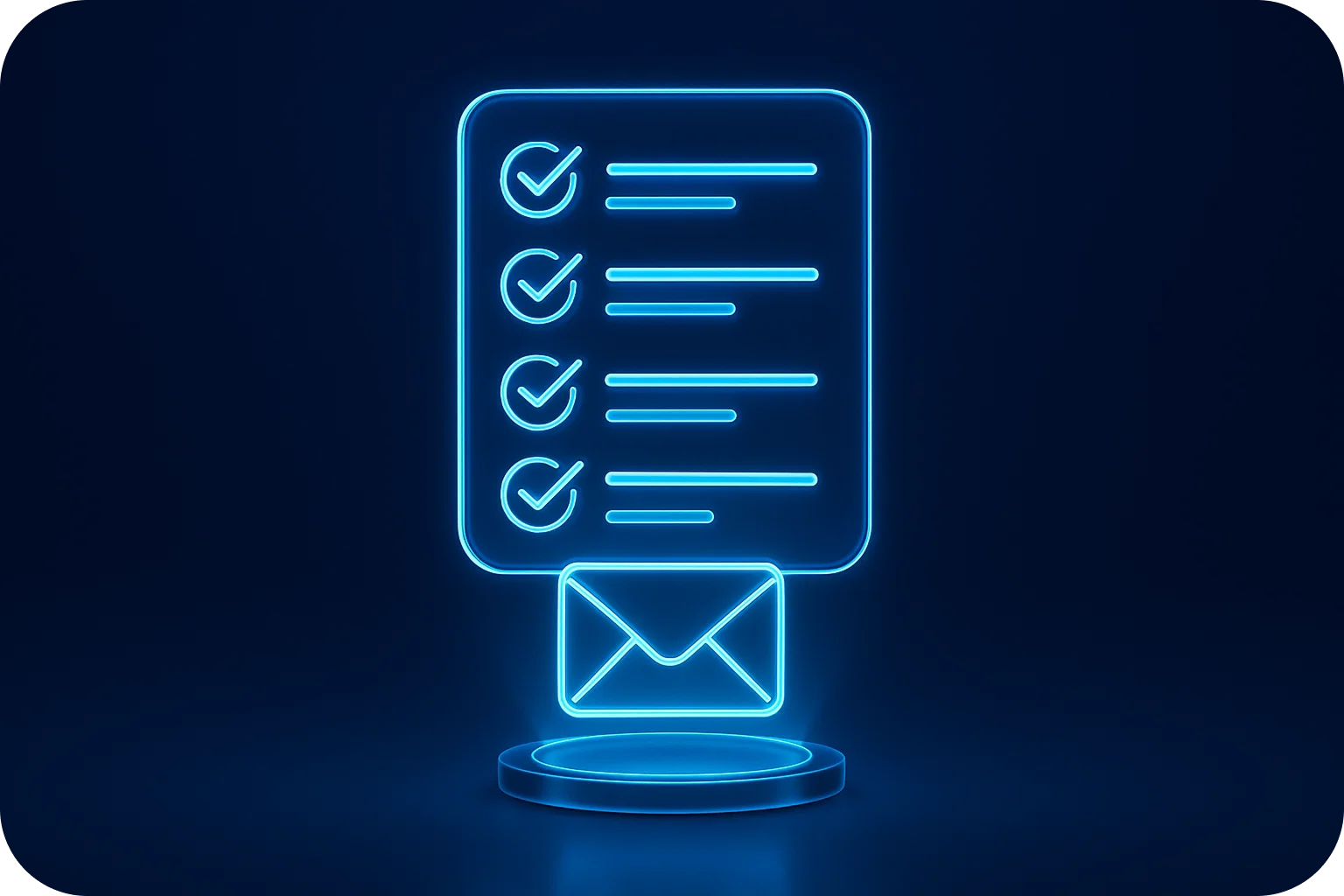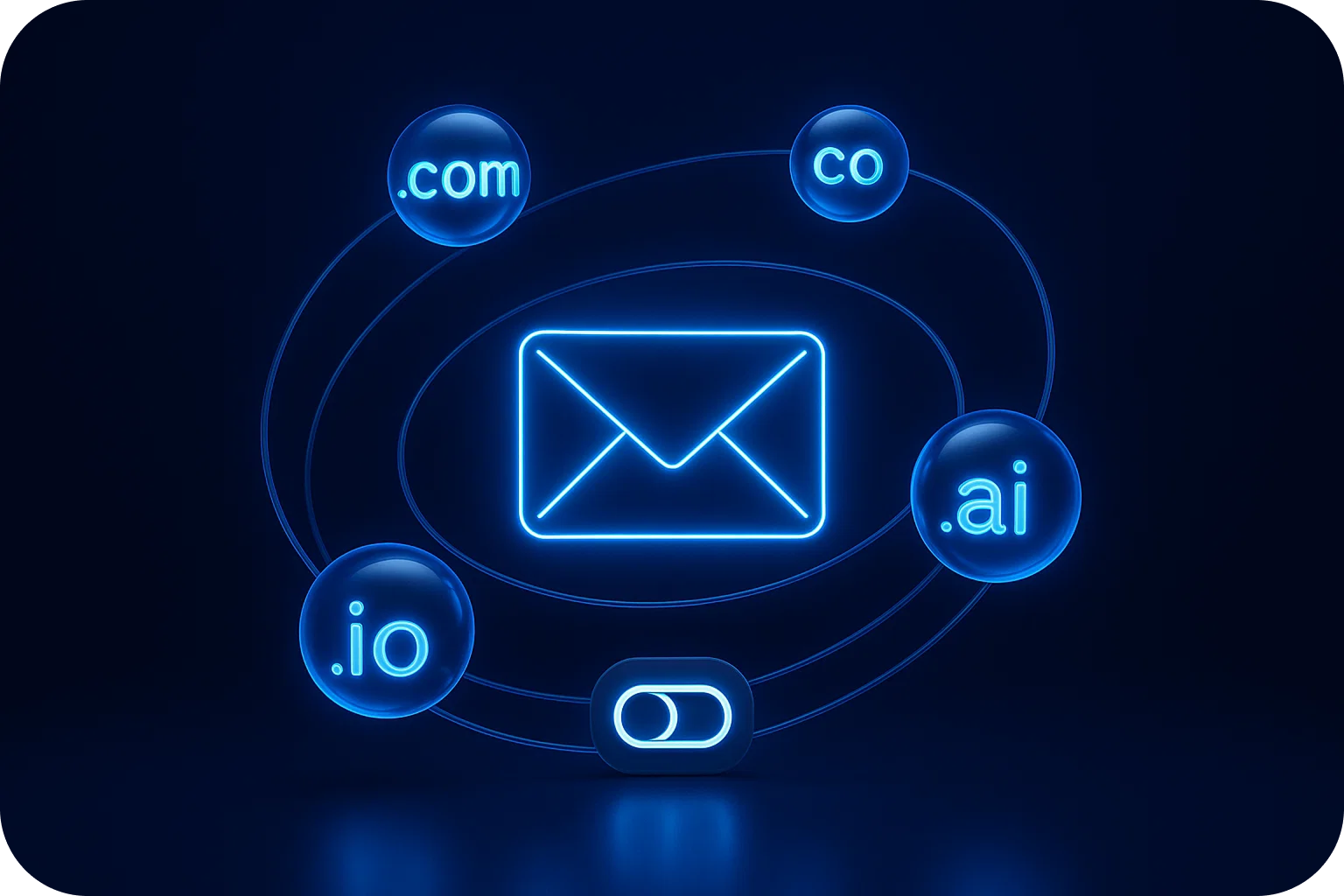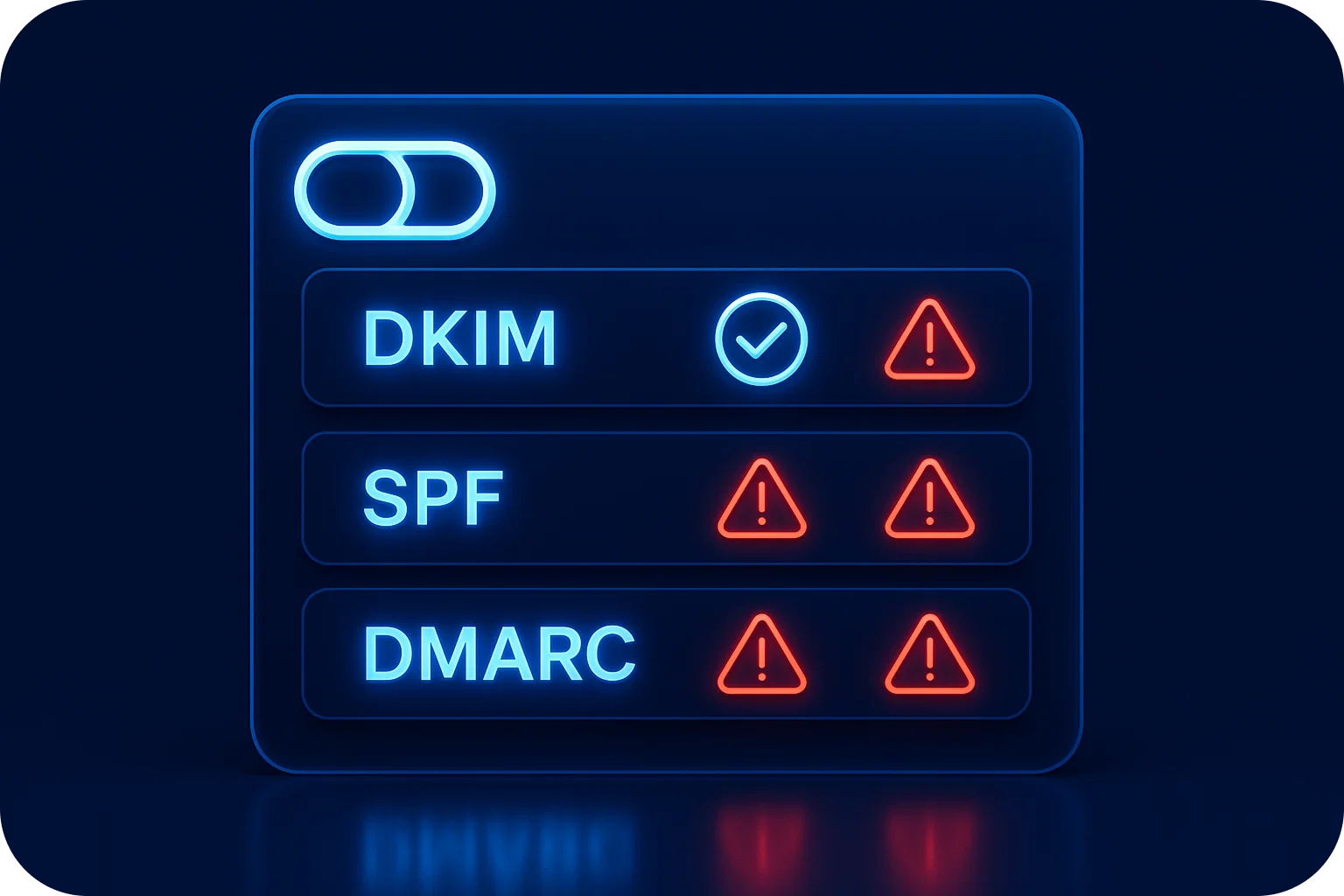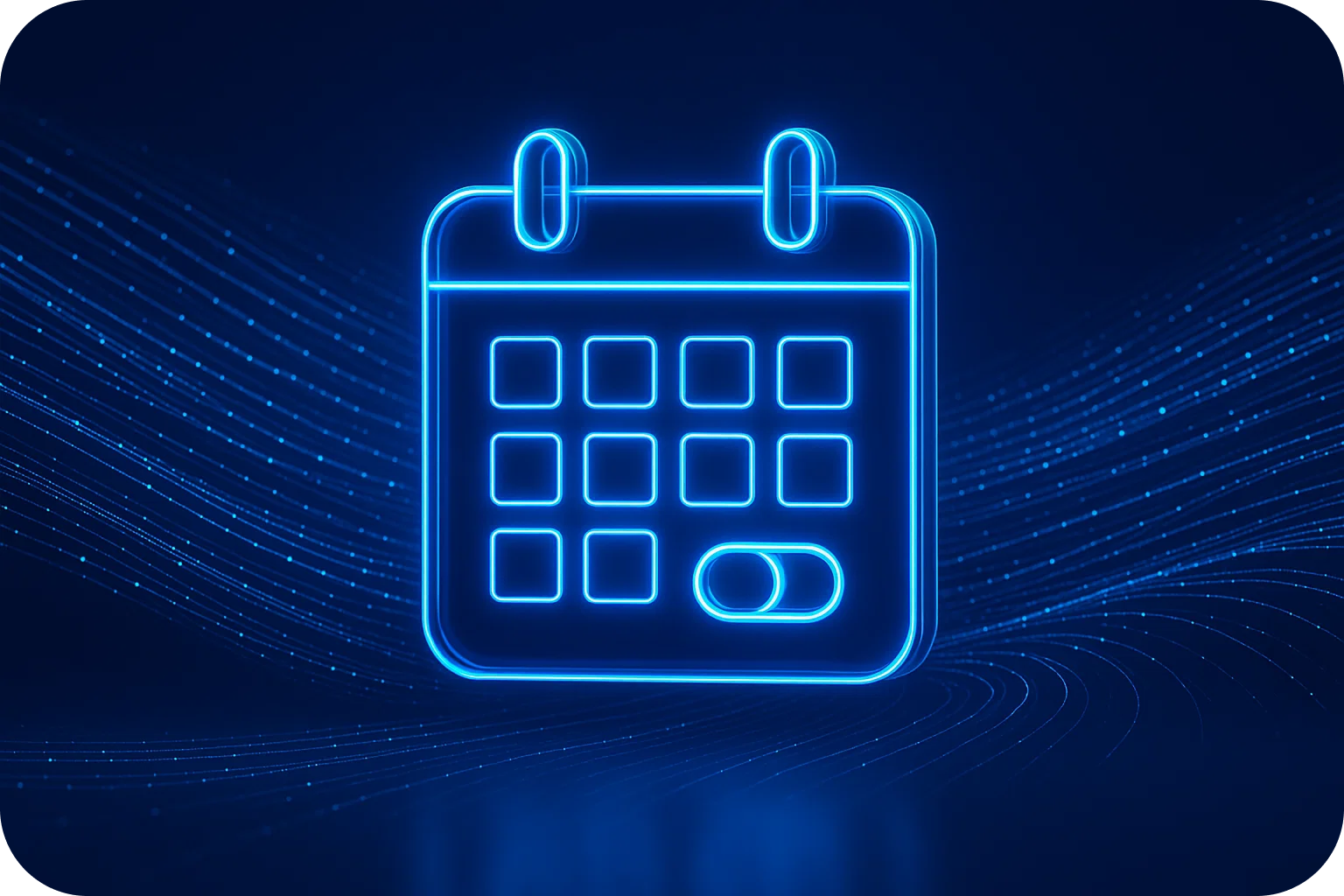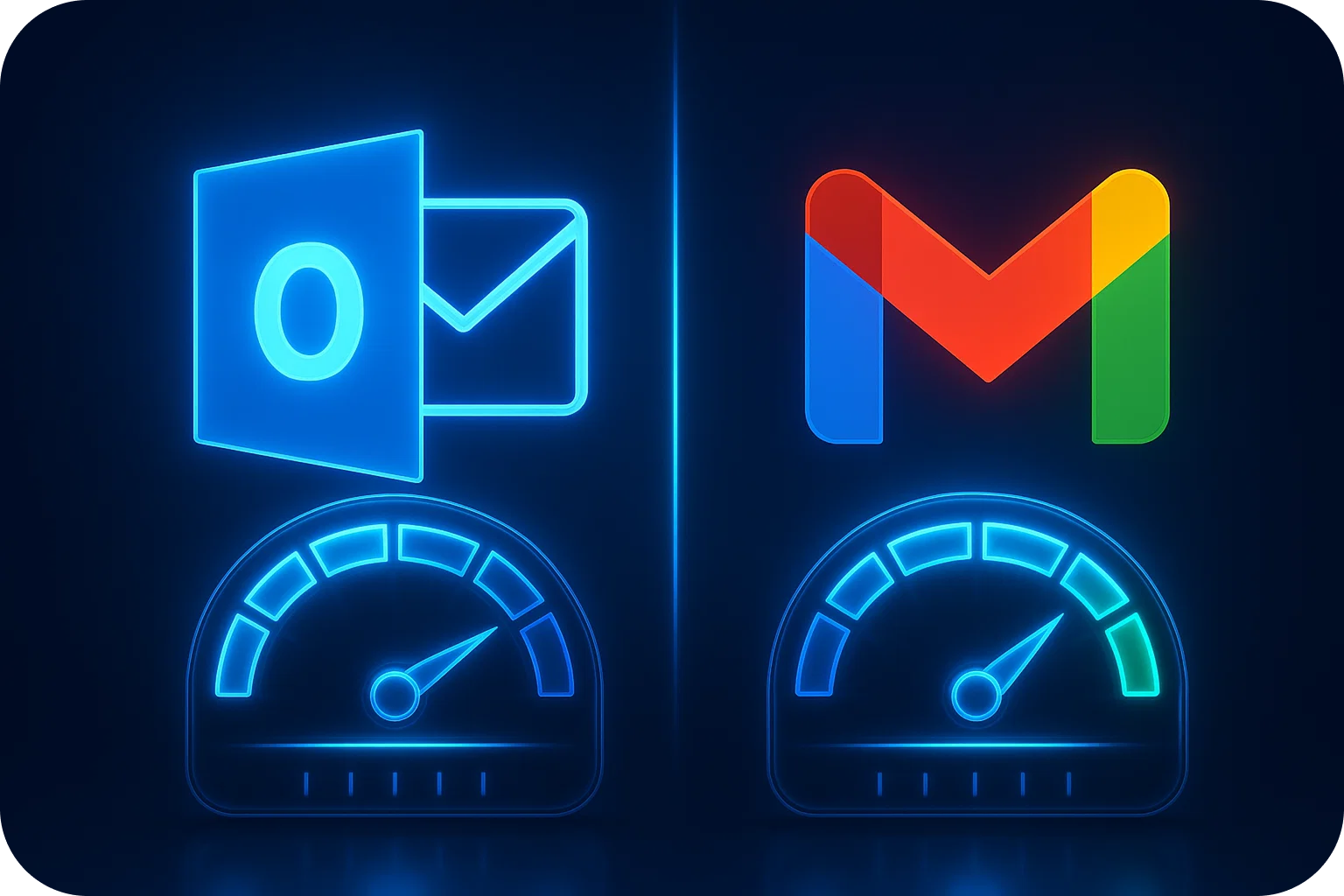From 20 to 2,000 Emails Daily: The Ultimate Cold Email Scaling Blueprint

Scaling cold email outreach from 20 to 2,000 emails per day isn't just about increasing volume; it's about building a sustainable infrastructure that protects your deliverability while maximizing your reach. The difference between successful scaling and landing in spam folders comes down to strategy, infrastructure, and execution.
This blueprint will show you exactly how to scale your cold email campaigns strategically, safely, and profitably.
Why Most Cold Email Scaling Attempts Fail
Before diving into the blueprint, let's address why 80% of companies struggle when they try to scale cold email:
- Rushing the warm-up process: Jumping from 20 to 200 emails overnight triggers spam filters
- Using a single domain: Putting all eggs in one basket risks your entire operation
- Ignoring technical setup: Missing SPF, DKIM, and DMARC records destroy sender reputation
- Poor list quality: Sending to invalid addresses tanks your deliverability metrics
- Generic messaging at scale: Mass-blasting identical emails gets flagged immediately
The companies that successfully scale cold email do something fundamentally different: they build infrastructure first, then scale gradually.
Phase 1: Foundation (Weeks 1-4) – Building Your Infrastructure
Domain Strategy
Your primary domain is your brand's lifeline. Never use it for cold outreach. Instead, implement a multi-domain strategy:
- Purchase 3-5 secondary domains similar to your main domain (e.g., if you're company.com, buy company.io, trycompany.com, getcompany.co)
- Age your domains for at least 2 weeks before sending any emails
- Set up proper DNS records (SPF, DKIM, DMARC) for each domain immediately
- Create professional websites for each domain—even a simple landing page builds credibility
Email Account Setup
Start with 3-5 email accounts per domain. The math is simple: if you're sending 20 emails per inbox daily across 15 inboxes (3 domains × 5 accounts), you're already at 300 emails per day.
Provider selection matters:
- Google Workspace: Best for B2B outreach, strong deliverability
- Microsoft 365 Outlook: Excellent for enterprise targets
- Shared IP mailboxes: Cost-effective for high-volume campaigns
Technical Configuration Checklist
Before sending a single cold email, verify:
- SPF records authenticate your sending servers
- DKIM signatures verify email authenticity
- DMARC policies protect against spoofing
- Custom tracking domains (avoid generic tracking links)
- Professional email signatures with real contact information
- Working reply-to addresses monitored daily
Phase 2: Warm-Up (Weeks 3-7) – Establishing Sender Reputation
This is where patience pays dividends. Email warm-up gradually builds your sender reputation with inbox providers.
The Warm-Up Protocol
Week 1-2: 5-10 emails per inbox daily
Week 3-4: 10-20 emails per inbox daily
Week 5-6: 20-30 emails per inbox daily
Week 7+: Maintain 20-50 emails per inbox daily (maximum recommended)
Critical warm-up practices:
- Start with highly engaged contacts (warm leads, existing connections)
- Maintain high open rates (aim for 40%+ during warm-up)
- Encourage replies, engagement signals trust to inbox providers
- Avoid spam trigger words in subject lines and body copy
- Gradually increase sending volume by 10-20% weekly
Monitoring Deliverability Metrics
Track these metrics weekly during warm-up:
- Inbox placement rate: Target 95%+ (use tools like GlockApps or Mail-Tester)
- Bounce rate: Keep below 2%
- Spam complaint rate: Must stay under 0.1%
- Open rate: Aim for 35-50% during warm-up
- Reply rate: Target 5-10% positive engagement
If any metric falls outside these ranges, pause scaling and diagnose the issue immediately.
Phase 3: Strategic Scaling (Months 2-4) – Growing to 500+ Daily
Once your initial infrastructure is warmed up and performing well, it's time to scale strategically.
The Domain Rotation System
To reach 500-1,000 emails daily while maintaining deliverability:
- Add 2-3 new domains monthly (start their warm-up immediately)
- Maintain 3-5 inboxes per domain as your standard
- Never exceed 50 emails per inbox daily, this is your safety ceiling
- Rotate domains if one shows declining metrics
Example scaling timeline:
Month 2: 5 domains × 5 inboxes × 30 emails = 750 emails daily
Month 3: 8 domains × 5 inboxes × 35 emails = 1,400 emails daily
Month 4: 10 domains × 5 inboxes × 40 emails = 2,000 emails daily
List Segmentation and Quality Control
At scale, list quality becomes your most important variable:
- Verify all email addresses before uploading (use ZeroBounce, NeverBounce, or similar)
- Segment by engagement level: Send to the most engaged prospects from your strongest domains
- Remove bounces immediately: One campaign with 5%+ bounces can damage domain reputation for weeks
- Suppress unsubscribes and spam complaints across all campaigns
- Refresh your lists regularly: Email addresses decay at 22.5% annually
Personalization at Scale
Generic emails kill deliverability and conversions. Implement these personalization layers:
- Dynamic fields: First name, company name, job title (minimum requirement)
- Behavioral triggers: Recent company news, funding announcements, job changes
- Industry-specific pain points: Create 5-10 templates per vertical
- A/B test continuously: Subject lines, opening hooks, CTAs
- Spintax variations: Rotate sentence structures to avoid duplicate content detection
Phase 4: Advanced Optimization (Months 4-6) – Reaching 2,000 Daily
Infrastructure Maturity
At 2,000 emails daily, you need enterprise-grade infrastructure:
- 10-15 domains in rotation with staggered warm-up schedules
- 50-60 email accounts across all domains
- Dedicated IP addresses for your highest-volume domains (optional but recommended)
- Professional email infrastructure platform to manage domains, DNS, and deliverability centrally
Advanced Deliverability Tactics
Implement sending patterns that mimic human behavior:
- Randomize sending times throughout business hours
- Add 30-90 second delays between emails from the same inbox
- Vary email length and structure within campaigns
- Include occasional manual sends from key accounts
- Respond to replies within 2 hours to boost engagement signals
Monitor and maintain reputation:
- Check domain reputation weekly (use Google Postmaster Tools, Microsoft SNDS)
- Run monthly deliverability tests to major inbox providers
- Maintain separate "quarantine" domains for testing new approaches
- Keep detailed logs of what works and what triggers spam filters
Campaign Structure for Scale
Organize campaigns to maximize efficiency and results:
- Tier 1 prospects: Highest value targets, best domains, maximum personalization
- Tier 2 prospects: Qualified leads, standard domains, template personalization
- Tier 3 prospects: Volume plays, newer domains, basic personalization
This tiered approach protects your best-performing infrastructure while still allowing aggressive scaling.
The Metrics That Matter at Scale
When you're sending 2,000 emails daily, focus on these KPIs:
- Deliverability rate: 98%+ (emails that reach inbox, not spam)
- Open rate: 30-50% (varies by industry)
- Reply rate: 3-8% (positive replies only)
- Meeting booking rate: 1-3% of emails sent
- Cost per meeting: Track infrastructure costs vs. meetings booked
- Domain health score: Monitor each domain's performance independently
Red flags that require immediate action:
- Inbox placement drops below 90%
- Bounce rate exceeds 3%
- Spam complaints above 0.1%
- Reply rate falls below 2%
- Multiple domains are showing declining metrics simultaneously
Common Scaling Mistakes to Avoid
Mistake #1: Scaling too fast
Solution: Increase volume by a maximum of 20% per week, never more.
Mistake #2: Neglecting domain rotation
Solution: Always have 2-3 domains warming up as backups.
Mistake #3: Ignoring engagement signals
Solution: If replies drop, pause and improve messaging before scaling further.
Mistake #4: Using poor-quality lists
Solution: Invest in email verification; it's cheaper than rebuilding domain reputation.
Mistake #5: Set-it-and-forget-it mentality
Solution: Review deliverability metrics weekly, optimize continuously.
Your 90-Day Scaling Roadmap
Days 1-14: Purchase and configure 3-5 domains, set up DNS, create email accounts
Days 15-45: Begin warm-up protocol, start with 5-10 emails per inbox daily, monitor metrics obsessively
Days 46-60: Scale to 20-30 emails per inbox, add 2-3 new domains, refine messaging based on reply data
Days 61-75: Reach 500-1,000 emails daily, implement advanced personalization, optimize high-performing campaigns
Days 76-90: Scale to 1,500-2,000 emails daily, establish domain rotation system, build backup infrastructure
The Infrastructure Advantage
Here's the truth about scaling cold email: your infrastructure determines your ceiling. Companies that try to scale without proper infrastructure hit walls at 200-300 emails daily. Companies that invest in infrastructure from day one can scale to 2,000+ emails while maintaining 98% deliverability.
The difference isn't just volume, it's sustainable growth that compounds over time. When you build the right foundation, you can:
- Scale without sacrificing deliverability
- Test aggressively without risking your primary domains
- Recover quickly if one domain gets flagged
- Maintain a consistent pipeline generation month over month
Ready to Scale Your Cold Email?
Scaling from 20 to 2,000 emails daily is achievable in 90 days with the right approach. The key is building infrastructure first, warming up properly, and scaling strategically based on data.
Remember: sustainable scaling beats rapid scaling every time. Take the time to build your foundation, monitor your metrics, and optimize continuously. The companies that win at cold email aren't the ones sending the most emails; they're the ones whose emails actually reach the inbox and drive conversations.
Start with the foundation, follow the blueprint, and scale with confidence. Your pipeline will thank you.
More articles
Get started now




%201.png)

